
Roots
The gentle whisper of a morning breeze through the leaves, the soft patter of rain on rich earth—these natural rhythms speak to an underlying truth ❉ life thrives on connection, on receiving what it needs from its deepest sources. For our textured strands, a similar quiet wisdom holds. We often consider external elixirs, the shimmering serums, and creamy conditioners, as the primary architects of hair hydration. Yet, a deeper understanding asks us to look inward, to the very wellspring of our being.
Can the choices we make at our tables truly shape the inner vitality of our hair, coaxing forth its natural moisture from within? This query invites us on a journey beyond surface-level care, into the cellular whispers and systemic rhythms that govern our hair’s true state of hydration. It asks us to consider our daily nourishment as a foundational act, one that resonates deeply within each strand, from root to tip.

Hair Anatomy and Its Water Balance
To appreciate how diet influences hair’s internal hydration, we must first recognize the hair’s intrinsic architecture. Each strand, though seemingly simple, comprises a complex arrangement of cellular components. At its heart lies the Cortex, the primary determinant of hair’s strength and elasticity. Surrounding this is the Cuticle, a protective outer layer made of overlapping scales.
Both of these structures contain water, and their ability to hold onto this water is paramount for hair’s overall health and appearance. Hair is composed of about 25% water, and its cells require water to maintain strength and flexibility. Well-hydrated hair resists dryness, brittleness, and breakage, while also displaying greater elasticity, allowing it to stretch without snapping.
The hair follicle, nestled within the scalp, represents a dynamic biological factory. It is a living entity, unlike the hair shaft itself, and its proper functioning hinges on a steady supply of nutrients and hydration. When the body is adequately hydrated, all cells, including those within the hair follicles, receive the necessary water to remain healthy and active. This foundational understanding of hair’s cellular reliance on water underscores why internal hydration is not merely a supplementary concept but a central tenour in achieving truly vibrant strands.
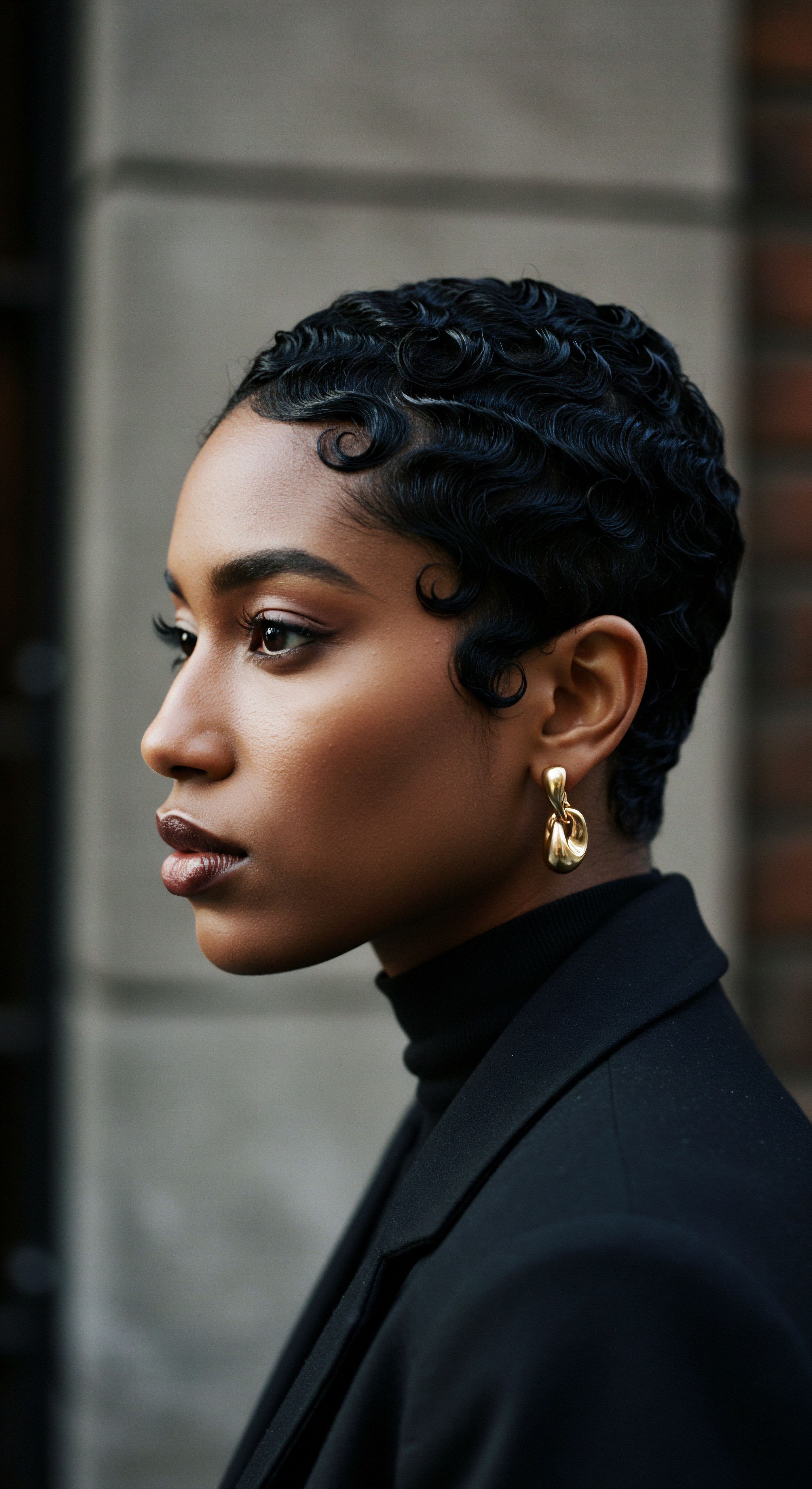
Textured Hair’s Unique Hydration Dynamics
Textured hair, with its unique curl patterns and varied porosity, often presents distinct hydration needs. The natural bends and twists in curly and coily hair mean that sebum, the scalp’s natural oil, does not always travel down the hair shaft as readily as it might on straight hair. This can leave certain sections of the strand more prone to dryness.
Furthermore, the cuticle scales on textured hair can be more raised, creating a surface that, while capable of absorbing water quickly, may also lose it with similar speed. This characteristic, often referred to as High Porosity, means that while external water can enter easily, retaining that water becomes the true challenge.
Considering these inherent structural differences, the role of internal systems in supporting sustained hydration becomes even more pronounced for textured hair. Topical products provide immediate relief and a protective seal, but they cannot fully compensate for a systemic lack of internal moisture. A holistic perspective recognizes that the body’s internal environment plays a profound role in dictating the hair’s baseline hydration levels, setting the stage for how effectively external products can then perform their sealing and conditioning duties.
The hair’s ability to retain moisture is not solely a matter of external application, but a reflection of deep internal cellular health.

The Foundational Lexicon of Hair Wellness
To navigate the landscape of hair wellness, particularly concerning internal hydration, a shared understanding of terms proves helpful.
- Hydration ❉ This refers to the water content within the hair shaft, particularly in the inner layers. Hydrated hair possesses suppleness and flexibility.
- Moisture ❉ This speaks to the oils and emollients that seal in hydration, preventing water loss from the hair. Products that moisturize hair, like specially formulated oils and serums, are ideal for this.
- Hair Follicle ❉ The living structure within the scalp from which hair grows. It requires adequate blood flow and nutrient supply for productive hair growth.
- Sebum ❉ The natural oil produced by the scalp’s sebaceous glands, which helps to lubricate and protect the hair shaft.
- Keratin ❉ The primary protein component of hair, forming its structural framework. Hair is about 95% keratin.
Understanding these terms allows for a more precise discussion of how dietary choices can influence the very fabric of our hair, supporting its water balance from within.

Ritual
As we turn our attention from the intrinsic nature of our strands to the practical wisdom that shapes their daily vitality, we acknowledge a collective desire for actionable understanding. Our hair journeys, often marked by cycles of experimentation and discovery, reflect a deeper search for harmony between our bodies and the external world. How can we, through mindful daily and periodic practices, truly support the internal hydration of our hair?
This inquiry leads us to consider the nourishment we offer our bodies as a continuous ritual, one that builds resilience and vibrancy from the inside out. The choices made on our plates translate into the building blocks of healthy hair, allowing us to cultivate strands that feel soft and supple, responding with grace to the world around them.

Can Water Intake Alone Hydrate Hair?
The simplest and most direct connection between diet and internal hydration begins with water itself. Our bodies, approximately 60% water, rely on this fundamental element for countless physiological processes, including those that support hair health. Hair is approximately 25% water by weight, and its cells, like all cells, need water to function properly.
Drinking enough water ensures that nutrients reach hair follicles, supporting their strength and limiting irritation from dead skin cells. The Institute of Medicine suggests a daily intake of two to three liters of water for men and women, respectively, to support hair growth.
While sufficient water intake is foundational, it acts as a catalyst, not a standalone solution. Water helps transport vital nutrients to the hair follicles, allowing them to produce strong, healthy hair. However, external factors, like environmental conditions, heat styling, and chemical treatments, can still strip moisture from the hair’s outer layers, even with optimal internal hydration. Thus, drinking water establishes a crucial internal baseline, but a comprehensive approach extends beyond just fluid consumption.

Which Dietary Components Influence Hair’s Internal Moisture?
Beyond simple water intake, specific dietary components play a nuanced role in supporting hair’s internal hydration systems. These elements contribute to the structural integrity of hair cells, aid in the transport of water and nutrients, and help maintain the scalp’s barrier function, all of which influence the hair’s ability to retain moisture.
Protein stands as a paramount component. Hair is primarily composed of Keratin, a protein. Adequate protein intake provides the necessary building blocks for strong hair growth and repair.
Lean meats, poultry, fish, eggs, legumes, nuts, and seeds all contribute valuable protein to the diet. A lack of protein can lead to slower hair growth and even shedding.
Healthy fats, particularly Omega-3 and Omega-6 Fatty Acids, are also vital. These lipids support scalp health and hydration, reducing dryness and boosting hair growth. Sources include fatty fish like salmon, mackerel, and sardines, along with flaxseeds, walnuts, and avocados. These fats help lock moisture into hair, skin, and nails.
Vitamins and minerals offer another layer of support.
- Vitamin A promotes sebum production, keeping the scalp moisturized. Sweet potatoes, carrots, and leafy greens are good sources.
- Vitamin C aids in collagen production, a protein that supports hair strength and the scalp’s structure. Citrus fruits, berries, and spinach are rich in Vitamin C.
- Vitamin E supports hair texture and appearance, and promotes blood circulation in the scalp. Nuts, seeds, and avocados contain Vitamin E.
- Zinc is important for tissue growth and repair, including hair. Oysters, beef, and pumpkin seeds are sources.
- Iron is essential for oxygen transport to hair follicles. Iron deficiency can lead to hair loss and brittle hair. Red meat, lentils, and spinach provide iron.
- Silica, a trace mineral, contributes to hair strength and elasticity by supporting collagen production. Bananas, oats, spinach, and leafy greens are sources of silica.
A balanced diet, encompassing a variety of these nutrients, provides a comprehensive approach to supporting hair’s internal hydration.
| Nutrient Protein |
| Primary Benefit for Hair Hydration Building blocks for keratin, hair strength |
| Food Sources Lean meats, fish, eggs, legumes, nuts |
| Nutrient Omega Fatty Acids |
| Primary Benefit for Hair Hydration Scalp health, moisture retention, shine |
| Food Sources Salmon, flaxseeds, walnuts, avocados |
| Nutrient Vitamin A |
| Primary Benefit for Hair Hydration Sebum production for scalp moisture |
| Food Sources Sweet potatoes, carrots, spinach |
| Nutrient Vitamin C |
| Primary Benefit for Hair Hydration Collagen production, hair strength |
| Food Sources Citrus fruits, berries, bell peppers |
| Nutrient Silica |
| Primary Benefit for Hair Hydration Hair strength, elasticity, collagen support |
| Food Sources Bananas, oats, spinach, green beans |
| Nutrient A diverse intake of these elements provides a strong foundation for healthy hair. |
Nourishing our bodies with essential proteins, healthy fats, and a spectrum of vitamins and minerals creates the internal conditions for truly hydrated hair.
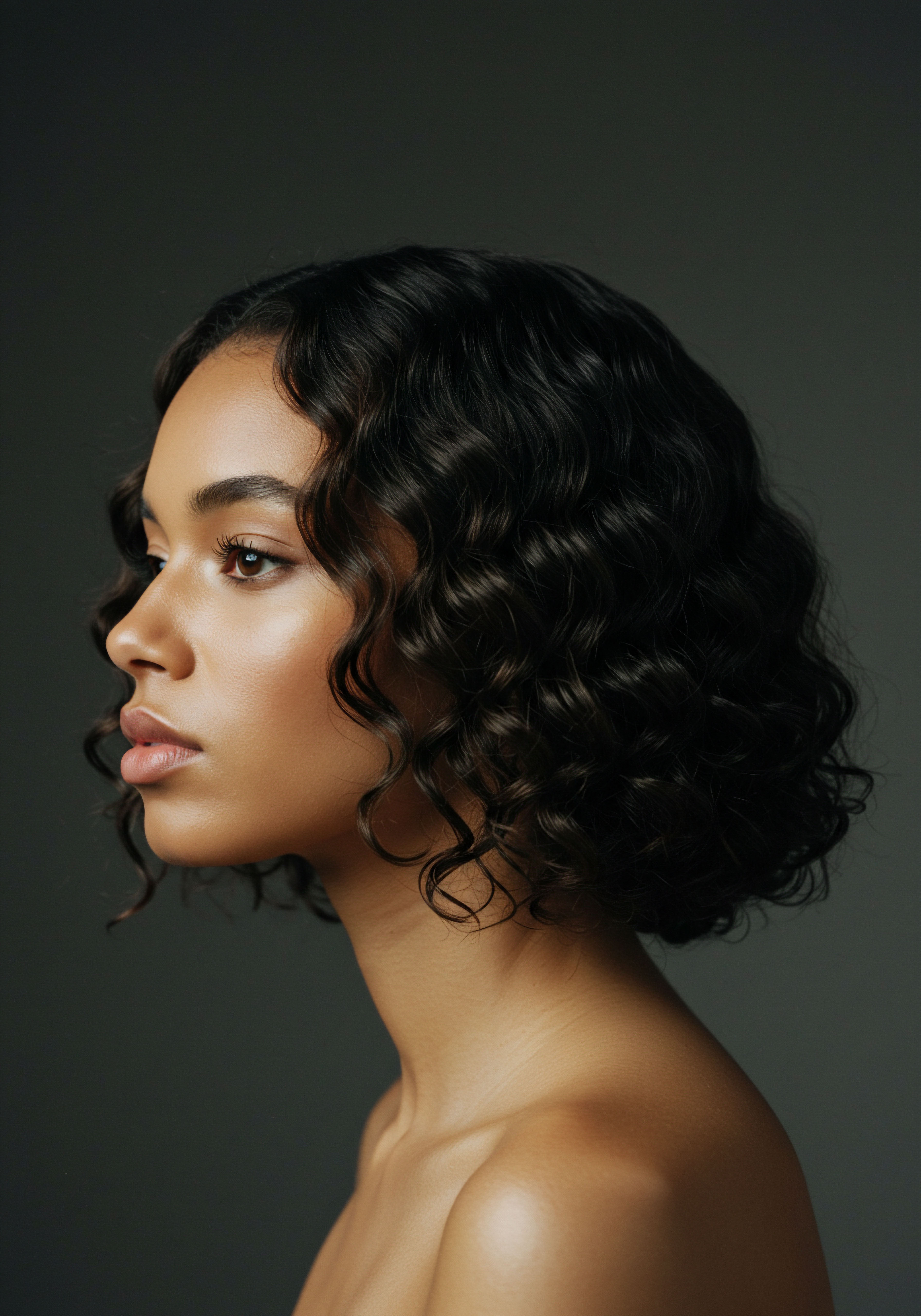
Dietary Habits and Their Impact on Hair’s Water Content
Beyond specific nutrients, broader dietary habits also exert influence. Consistent eating patterns ensure a steady supply of energy and nutrients to hair follicles. The energy needed for hair cell formation dips several hours after a meal. Regular, balanced meals and nutritious snacks, such as fruits, vegetables, or whole-grain options, help sustain these energy levels, supporting hair follicle activity.
Conversely, certain dietary choices can hinder hair health and, by extension, its internal hydration. Diets excessively high in sugar can displace nutrient-rich foods, leading to deficiencies in vitamins like biotin, zinc, iron, and vitamins A, C, and E, all vital for hair. High sugar intake can also affect blood vessels in the scalp, potentially compromising nutrient delivery to follicles. Similarly, excessive consumption of saturated fats might affect hair follicle stimulation.
It is also worth noting that overly restrictive or rapid weight loss diets can result in significant hair loss due to nutrient deficiencies and bodily stress. The body prioritizes vital organs during such periods, often reducing support for non-essential functions like healthy hair growth. Therefore, a balanced, consistent approach to eating, rather than extreme dietary measures, aligns more harmoniously with the rhythms of healthy hair.
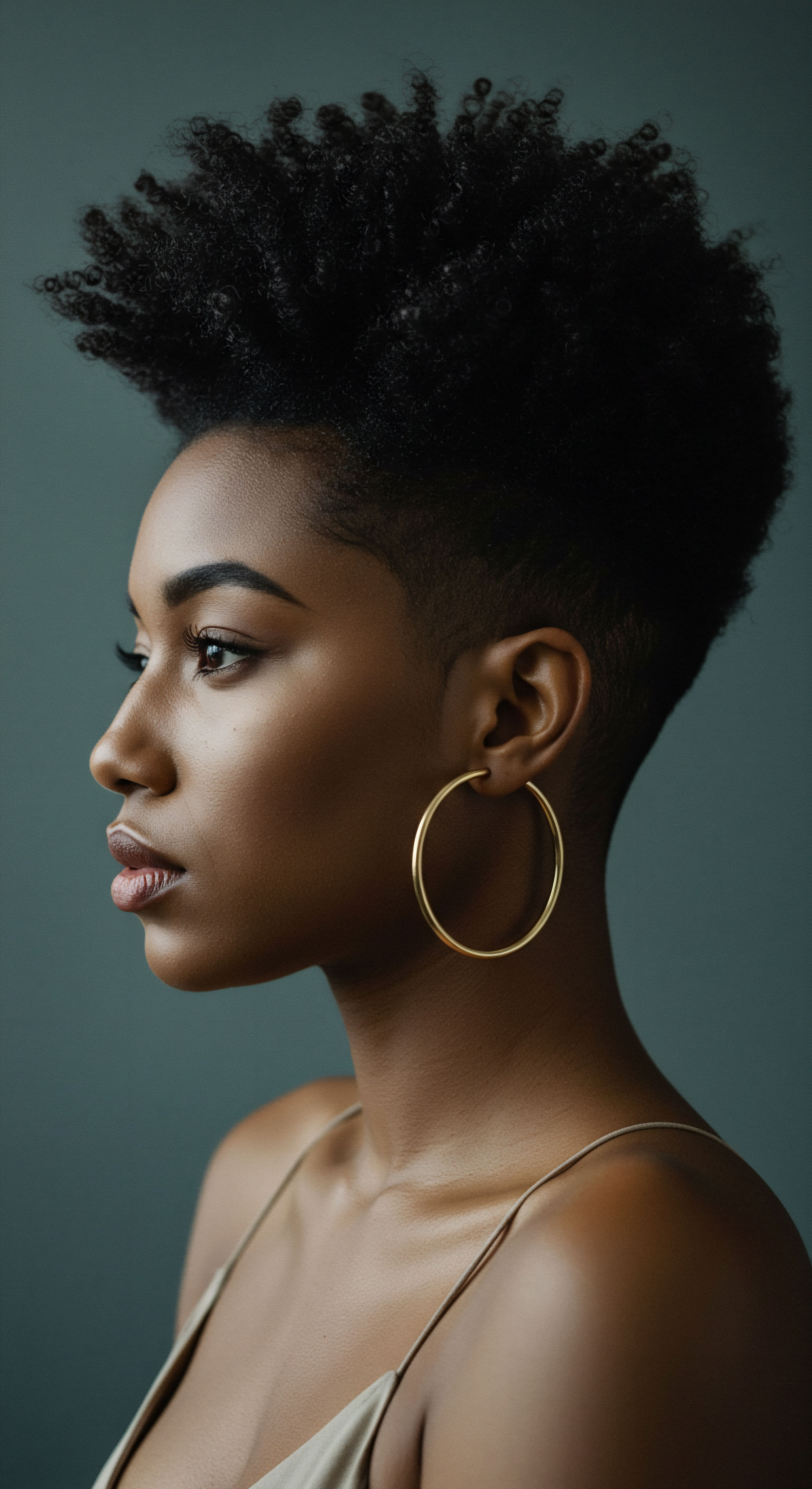
Relay
As we move deeper into the conversation surrounding hair’s internal hydration, a more sophisticated lens reveals the intricate interplay of biological mechanisms, cultural practices, and even environmental nuances. How does the systemic symphony of our bodily functions truly translate into the subtle cellular hydration of our strands? This question beckons us to consider the profound connections that extend beyond simple nutrient absorption, exploring the less apparent complexities that shape our hair’s resilience and vitality. We are invited into a space where scientific inquiry meets the lived experience, uncovering layers of understanding that inform a truly holistic approach to textured hair wellness.
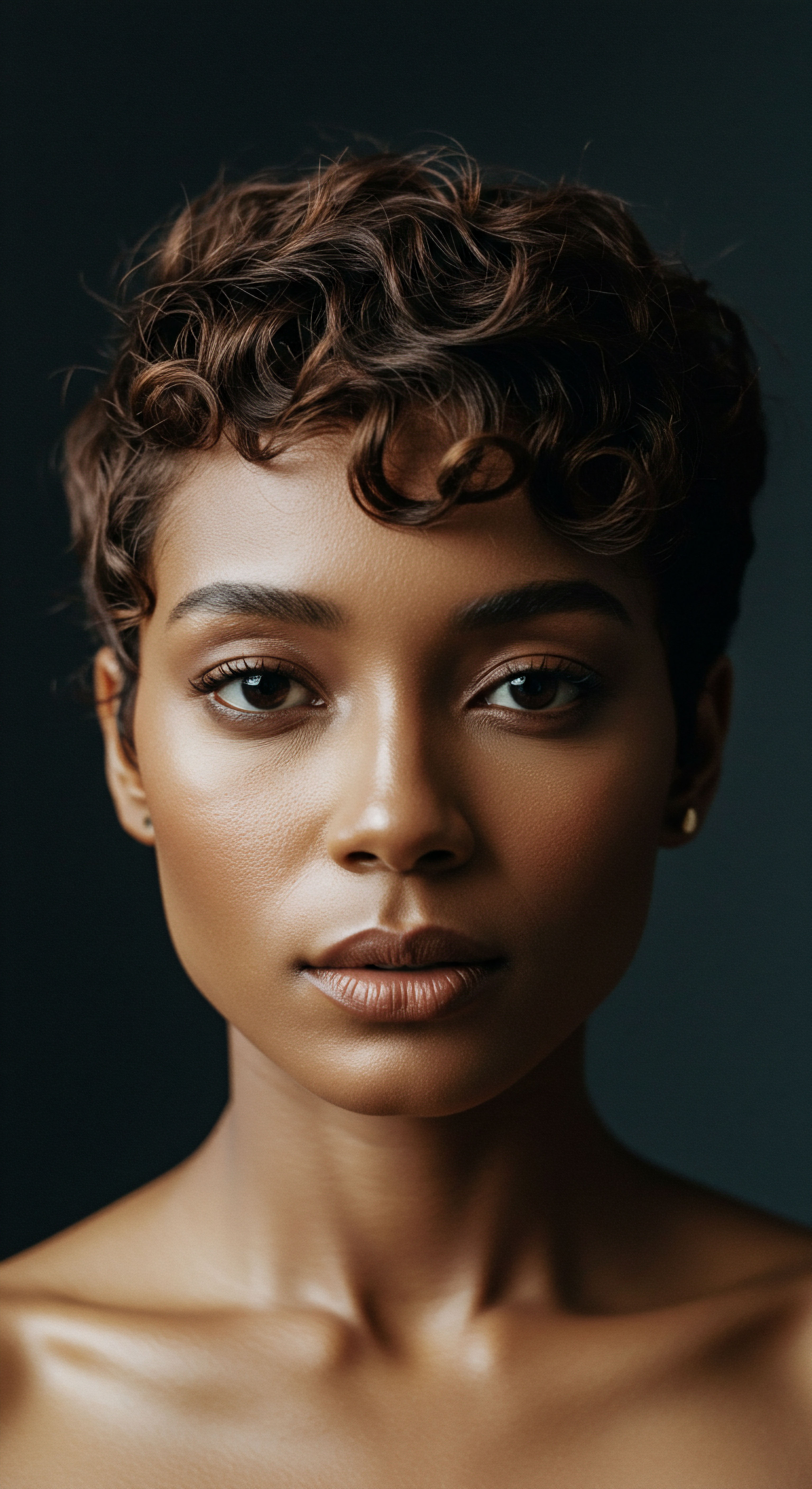
Beyond Basic Absorption ❉ Cellular Hydration Mechanisms
The concept of internal hair hydration extends far beyond merely drinking water or consuming nutrient-rich foods. It delves into the sophisticated mechanisms at the cellular level that govern water balance and nutrient transport within the hair follicle and shaft. Hair follicles, as active metabolic sites, depend on robust blood flow to deliver oxygen and nutrients. Dehydration can compromise this circulation, thereby limiting the supply of vital resources to the hair roots.
Consider the role of Phospholipids. These complex lipids are fundamental components of cell membranes, including those within hair follicles. They play a critical role in maintaining the flexibility and function of cell membranes, enabling cells to absorb hydration and nutrients effectively. When cell membranes are healthy, they can better regulate the movement of water molecules, ensuring that hair cells retain sufficient moisture to remain flexible and resilient.
Research has explored the potential of phospholipids, with one study from 2015 published in Biomolecules and Therapeutics finding that phosphatidylcholine exhibited hair growth-promoting activities comparable to minoxidil, and could even enhance its growth-promoting potential when used in combination. This suggests a direct cellular impact that goes beyond simple nutrient provision.
Furthermore, specific cellular components, like Aquaporins, are being investigated for their role in water transport across cell membranes in various tissues. While direct, extensive research on aquaporins’ specific influence on hair hydration via dietary intake is still developing, their presence in other bodily systems suggests a potential, albeit complex, connection to cellular water balance within hair follicles. This represents a frontier of understanding, hinting at the subtle, molecular dances that dietary choices might orchestrate within our hair’s living tissues.

The Microbiome Connection to Scalp and Hair Hydration
An often-overlooked dimension of internal hydration systems involves the body’s vast microbial communities, particularly the gut microbiome, and its potential influence on scalp health. A balanced gut microbiome is increasingly linked to overall systemic health, including skin barrier function and inflammatory responses. Given that the scalp is an extension of the skin, a healthy gut environment could indirectly support scalp hydration by reducing systemic inflammation and promoting a balanced immune response, which in turn could influence the optimal functioning of sebaceous glands and hair follicles.
While direct research definitively linking specific dietary choices to the scalp microbiome and hair hydration remains an emerging field, the established connection between gut health and skin conditions offers a compelling parallel. Conditions like seborrheic dermatitis, which can lead to scalp dryness and flakiness, are sometimes exacerbated by systemic factors. A diet rich in diverse plant fibers and fermented foods, supporting a healthy gut, might therefore contribute to a more balanced scalp environment, which in turn can indirectly aid in maintaining hair’s moisture. This is a subtle yet significant interplay, moving beyond direct nutrient delivery to a more systemic, interconnected understanding of wellness.
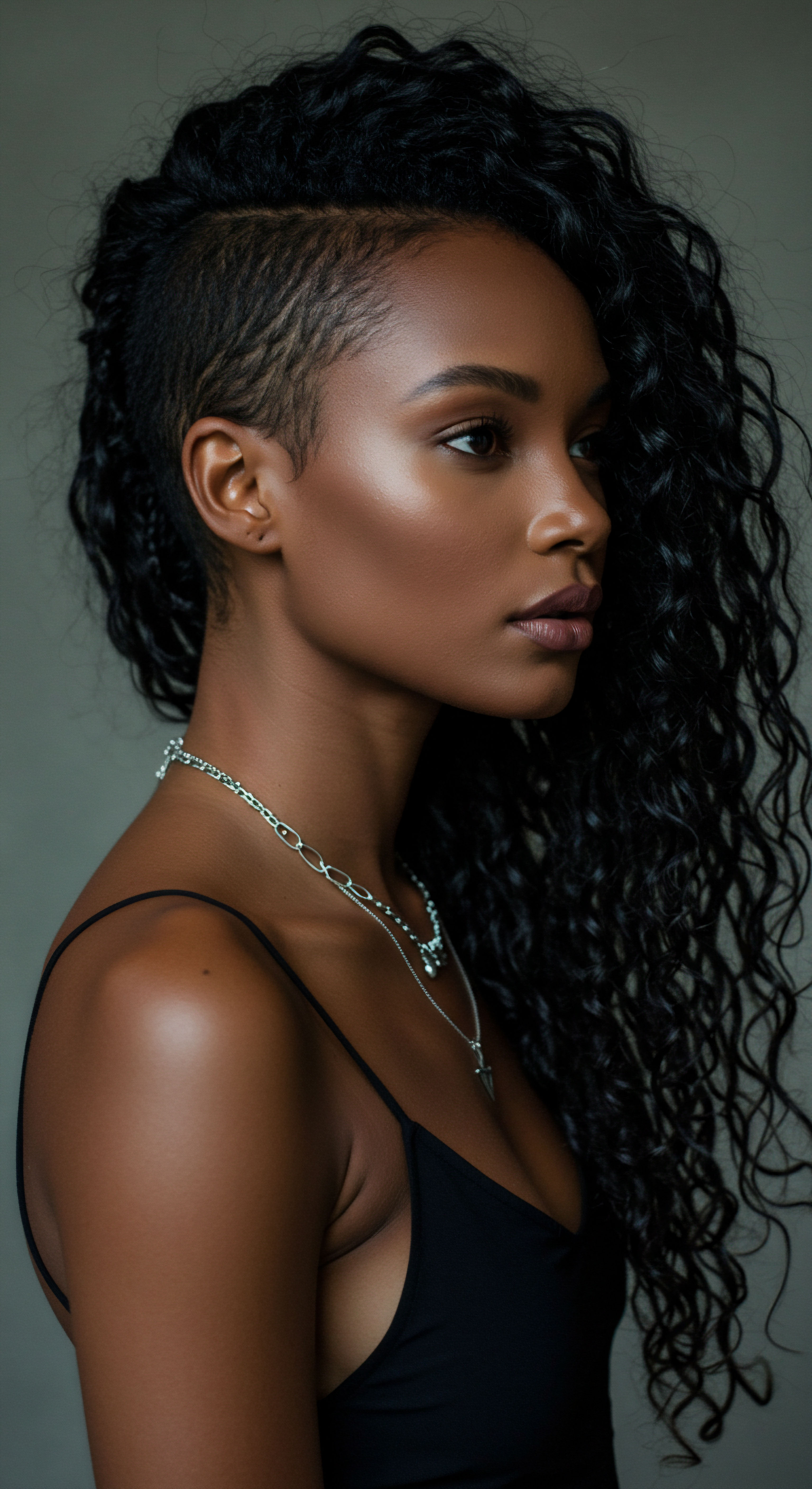
Cultural Wisdom and Modern Science ❉ A Harmonious Blend?
Across diverse cultures, ancestral practices have long recognized the intrinsic link between diet and the vibrancy of hair. These traditions, often passed down through generations, speak to a wisdom that predates modern scientific classification. For instance, many African and Afro-diasporic communities have historically incorporated diets rich in nutrient-dense, whole foods, emphasizing vegetables, fruits, and lean proteins.
These dietary patterns, while not explicitly framed in terms of “internal hydration systems,” inherently supported the physiological processes that lead to healthy hair. The focus was often on consuming foods that provided sustenance and promoted overall vitality, which naturally extended to hair and skin.
For example, traditional diets in many parts of Africa frequently featured foods high in silica, a mineral known to support hair strength and elasticity. Millet, a staple grain in various African cuisines, is a noteworthy source of silica. While contemporary science now quantifies the benefits of silica in strengthening hair strands (a 2007 study involving 48 women with fine hair showed strengthened strands after 9 months of 10mg silicon supplementation), traditional practices often relied on observation and generational knowledge of what nourished the body and its outward manifestations. This convergence of ancient wisdom and modern scientific validation offers a powerful testament to the enduring truth that what we consume deeply influences our physical selves, including the very essence of our hair.
The hair’s ability to retain moisture is not solely a matter of external application, but a reflection of deep internal cellular health.

Emerging Insights and Future Directions
The scientific exploration of diet and hair hydration continues to expand, revealing new avenues for understanding and intervention. Beyond established nutrients, research into less commonly discussed compounds and their impact on hair’s water balance is gaining traction.
Consider the discussion around Hydrogen Water. While more research is always valuable, preliminary findings suggest molecular hydrogen in hydrogen-infused water may act as a selective antioxidant, neutralizing harmful free radicals that cause oxidative stress around hair follicles. This could create a healthier environment for hair growth and potentially support moisture retention by protecting cellular integrity. This perspective shifts the focus from merely adding moisture to actively protecting the cellular machinery responsible for maintaining hydration.
The complex interplay between hormonal balance and hair health also warrants deeper consideration. Hormonal fluctuations, such as those during pregnancy or menopause, can influence oil production on the scalp and alter hair texture and hydration levels. While dietary choices cannot fully control hormonal shifts, a nutrient-dense diet can support overall endocrine health, potentially mitigating some of the hair-related challenges associated with these life stages. This layered understanding suggests that dietary support for hair hydration is not a simple linear equation, but rather a dynamic dance within the body’s interconnected systems.

Reflection
Our exploration of dietary choices and their influence on hair’s internal hydration systems unveils a profound truth ❉ the beauty of our textured strands is not merely a surface phenomenon, but a living testament to the nourishment we provide from within. It invites us to view our plates not just as sources of sustenance, but as canvases upon which we paint the vibrant health of our hair. The gentle wisdom of ancestral practices, harmonizing with the meticulous insights of modern science, reveals that true hydration stems from a holistic approach, where every bite and every sip contributes to the delicate balance within. Our hair, then, becomes a radiant echo of our inner well-being, reflecting a profound connection between body, heritage, and care.
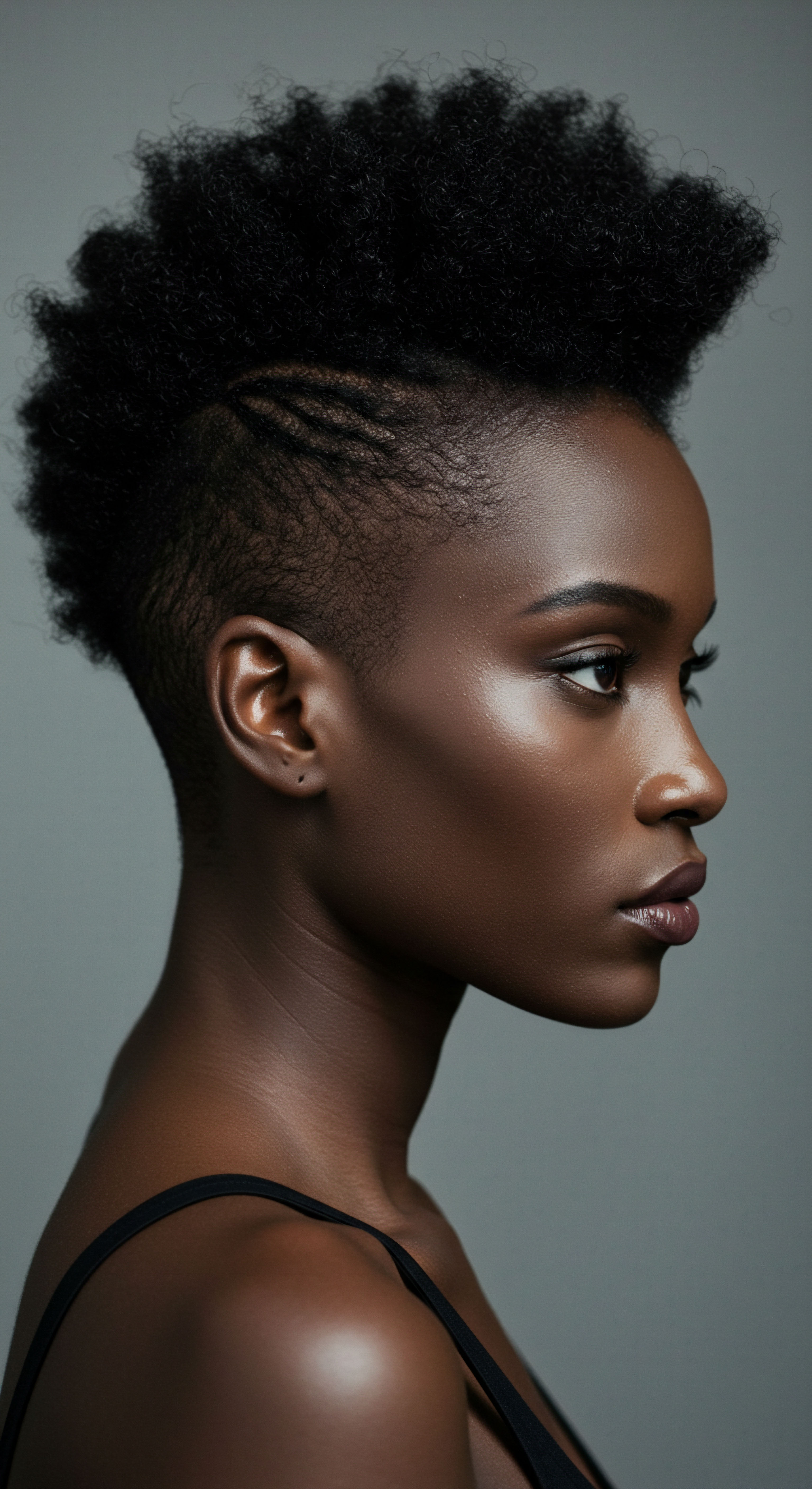
References
- 1. Cloud Nine. Understanding How Nutrition Impacts Hair Loss and Growth. CLOUD NINE; 2024.
- 2. Cloud Nine New Zealand. Nutrition ❉ How to Nourish Your Hair From the Inside Out. Cloud Nine New Zealand; 2024.
- 3. RPR Hair Care. The Science of Hair Hydration ❉ How to Fix Dry Hair. RPR Hair Care; 2024.
- 4. Mayo Clinic Health System. What you eat promotes radiant hair, skin and nails naturally. Mayo Clinic Health System; 2022.
- 5. CLOUD NINE. The Importance of Hair Hydration. CLOUD NINE; 2024.
- 6. Oribe. THE SCIENCE BEHIND YOUR HAIR ❉ MOISTURE vs HYDRATION. Oribe; 2024.
- 7. Times of India. Foods for Hair ❉ Dull, brittle hair? 7 foods that give shine and strength to hair?. Times of India; 2024.
- 8. Theradome. Does Drinking Water Help Hair Growth? ❉ Role of Hydration. Theradome; 2025.
- 9. Medway Hospitals. healthy diet for hair growth. Medway Hospitals; 2025.
- 10. BodyBio. Healthy Fats Heal Your Skin, Hair, and Nails. BodyBio; 2021.
- 11. Meeraz Clinic. How Diet Affects Your Hair and Scalp Health. Meeraz Clinic; 2024.
- 12. The Independent Pharmacy. Dehydration and Hair Health ❉ How It Impacts Your Hair. The Independent Pharmacy; 2024.
- 13. Philip Kingsley. Food For Hair Loss – Eating Habits, Nutrition & Tips. Philip Kingsley; 2022.
- 14. Hairmax. The Crucial Role of Hydration for Hair and Scalp Health in the Summer. Hairmax; 2024.
- 15. Biltmore Hair Restoration. Dehydration and Hair Loss ❉ How to Hydrate, Prevent Damage, and Restore Your Hair. Biltmore Hair Restoration; 2024.
- 16. Cary OBGYN. Nutrition for Stronger Hair, Skin, and Nails ❉ The Best Foods for Women. Cary OBGYN; 2024.
- 17. Piurify. Hydrogen Water for Hair Growth. Piurify; 2024.
- 18. Yuaia Haircare. Guide ❉ What is silica and how does it affect your hair?. Yuaia Haircare; 2023.
- 19. WellBeing. Health Benefits of Silica-Rich Foods – Explained in Detail. WellBeing; 2024.
- 20. Verb Products. How to Hydrate Dry Hair ❉ 9 Tips+Tricks (Updated 2024). Verb Products; 2024.
- 21. MONDAY Haircare. Say Goodbye to Dry ❉ Dream Ingredients for Dry Hair. MONDAY Haircare; 2023.
- 22. Clearstem. The Surprising Health Benefits of Silica for Your Hair. Clearstem; 2024.
- 23. Rodolphe&Co. How to know if my hair needs hydration?. Rodolphe&Co; 2024.
- 24. Bradceuticals. Transform Your Hair with Stem Cell Hair Serum ❉ A Comprehensive Guide. Bradceuticals; 2024.
- 25. Fenugen. The Hair Moisturizing Ingredient Your Hair Care Has Been Missing ❉ Phospholipids. Fenugen; 2022.
- 26. WebMD. Top 10 Foods for Healthy Hair. WebMD; 2025.
- 27. The Institute of Trichologists. The recipe for healthy hair growth!. The Institute of Trichologists; 2024.
- 28. BASF Personal Care. The myth about “dry hair”. BASF Personal Care; 2024.
- 29. Kinetico San Antonio. 4 Ways Drinking Water Improves Hair Growth. Kinetico San Antonio; 2024.
- 30. Healthline. Silica For Hair ❉ Benefits, Supplements, and More. Healthline; 2020.
- 31. Happi. Several Factors Contribute to Dry Hair Issues. Happi; 2020.
- 32. Meeraz Clinic. The Impact of Diet and Nutrition on Hair Health. Meeraz Clinic; 2024.
- 33. Zodiac Spa Beauty & Wellne. Why is my hair so dry, and how can I fix it?. Zodiac Spa Beauty & Wellne; 2025.
- 34. My Hair Doctor. HEALTHY DIET HEALTHY HAIR. My Hair Doctor; 2024.
- 35. Beautylux. Hair Lacking Moisture? Here’s What You Should Do. Beautylux; 2024.
- 36. Wimpole Clinic. Can Dehydration Cause Hair Loss? Understanding the Link. Wimpole Clinic; 2024.
- 37. Xceeding Beauty. The Importance of Hydration for Healthy Hair. Xceeding Beauty; 2025.
- 38. Prose. Phospholipids – Best Ingredients for Hair. Prose; 2024.
- 39. Google Patents. US9180135B2 – Miliacin and sphingolipids and/or phospholipids composition for hair and scalp care. Google Patents.
- 40. Healthline. Best Foods for Hair Growth ❉ What to Eat, Drink & Avoid. Healthline; 2025.
- 41. Save My Exams. Balanced Diet (Edexcel IGCSE Biology) ❉ Revision Note. Save My Exams; 2024.
- 42. Wikipedia. Root hair. Wikipedia.
- 43. Verywell Health. The Surprising Benefits of Rosemary Water for Hair Growth. Verywell Health; 2024.